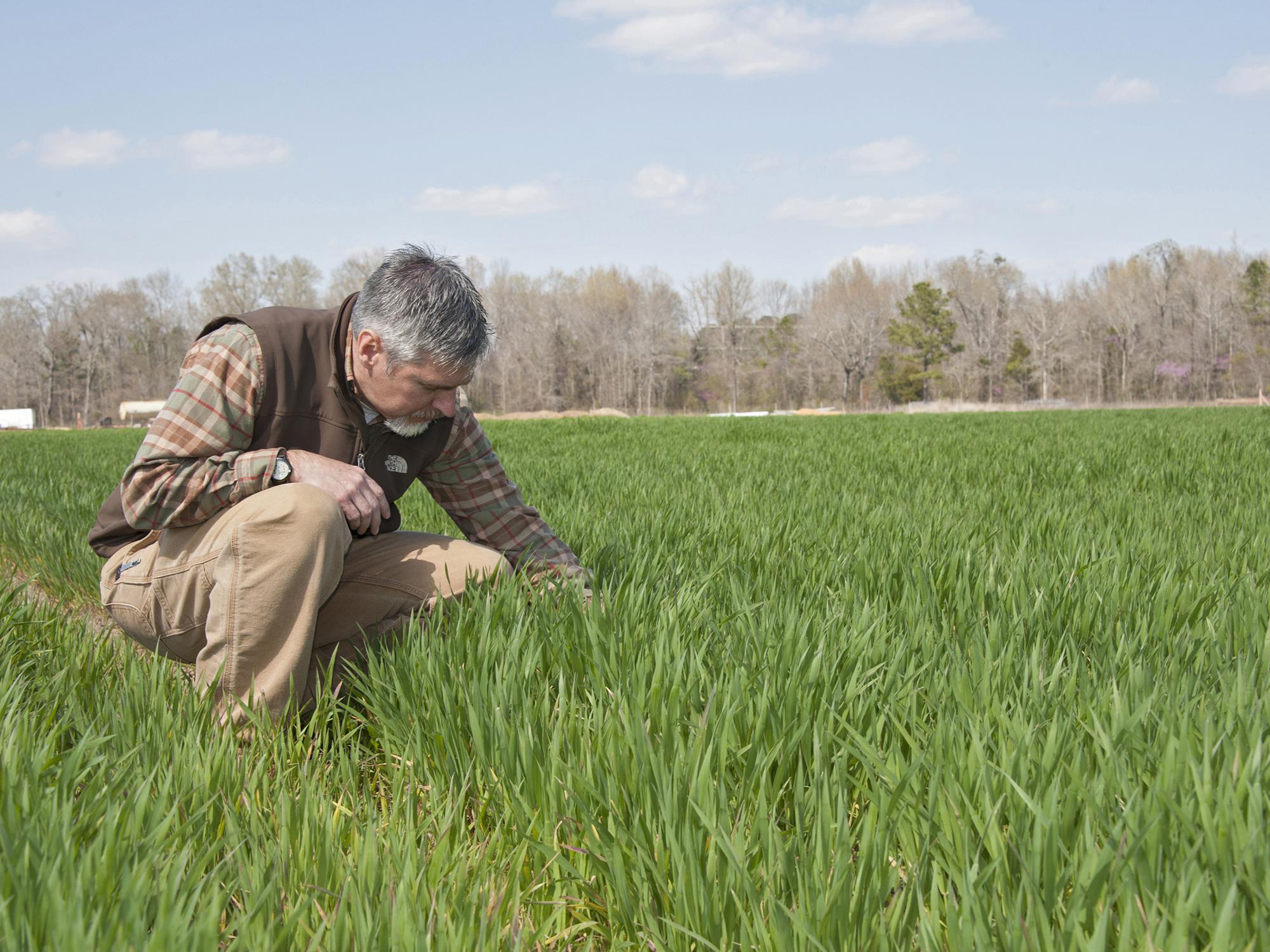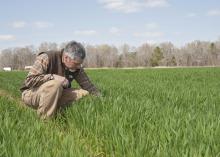Information Possibly Outdated
The information presented on this page was originally released on March 28, 2014. It may not be outdated, but please search our site for more current information. If you plan to quote or reference this information in a publication, please check with the Extension specialist or author before proceeding.
Cold weather slowed winter wheat, but crop should thrive
MISSISSIPPI STATE -- This year’s cold winter slowed wheat growth so the late-March freeze across much of Mississippi probably did not cause major damage to the state’s wheat crop.
Erick Larson, grain crops agronomist with the Mississippi State University Extension Service, said most wheat across the state had not reached a growth stage where it would have been sensitive to freezing temperatures when the cold returned on March 26.
“We had a lot colder than normal winter, so we didn’t get as much growth on our wheat as usual, and that worked out to be a good thing,” Larson said. “Often by late March, we have wheat approaching heading stage, when it is very vulnerable to freeze, but this year, most wheat has several weeks to go before that stage.
“We also had extremely cold temperatures several times during the winter, but wheat is most tolerant to extreme cold during that time,” he said. “However, some of our wheat is sowed by broadcasting seed on top of the soil, and this wheat may have sustained some winterkill because the seed is more exposed and vulnerable.”
Wheat planted with a drill is dropped an inch or more into the ground and covered. This method improves its stand, vigor and winter hardiness.
This year, wheat broke dormancy in mid-March, much later than usual.
“The wheat has not reached the boot stage, when the head is swollen in the uppermost part of the stem right before it emerges,” Larson said. “At the boot stage, temperatures of 26 to 28 degrees will cause some injury, but fortunately, most of our wheat was younger than that.”
While low temperatures appear to have caused no real damage, migratory snow geese that feed in wheat fields have been an issue.
“The amount of grazing they did this year was substantial,” Larson said. “Because of the low temperatures, the fields didn’t have as much plant growth as usual for the geese to feed on. It was cold in February, so the geese stayed longer in our fields before migrating back north, and there were not as many acres of wheat for them to graze on.”
Cold weather did have one benefit. Fertilizer and herbicide applications were done later than usual, and Larson said that may mean less nitrogen is lost this year.
Mississippi producers planted just 200,000 acres of wheat in the fall, down substantially from the more than 400,000 acres harvested in 2013. Wheat is often planted on soybean acreage, and Larson said part of the decrease is because soybeans were harvested so late last year.
Brian Williams, Extension agricultural economist, said market prices are typically the highest in the spring, when stockpiled wheat is at its lowest.
“Wheat prices have been rising steadily since the first part of February, when the May contract was trading for about $5.60,” Williams said. “As of March 24, wheat in Greenville was trading for $7.30 per bushel, which is just slightly below where it was a year ago. Prices are above the three- and five-year historical averages for this time of year, as well.”
Mississippi is not the only state that planted significantly fewer wheat acres than the previous year, so a smaller supply is driving prices, as are concerns about the crop’s condition after the cold winter. Williams said tensions between Ukraine and Russia, both major players in the global wheat market, are also affecting wheat prices in the U.S.







